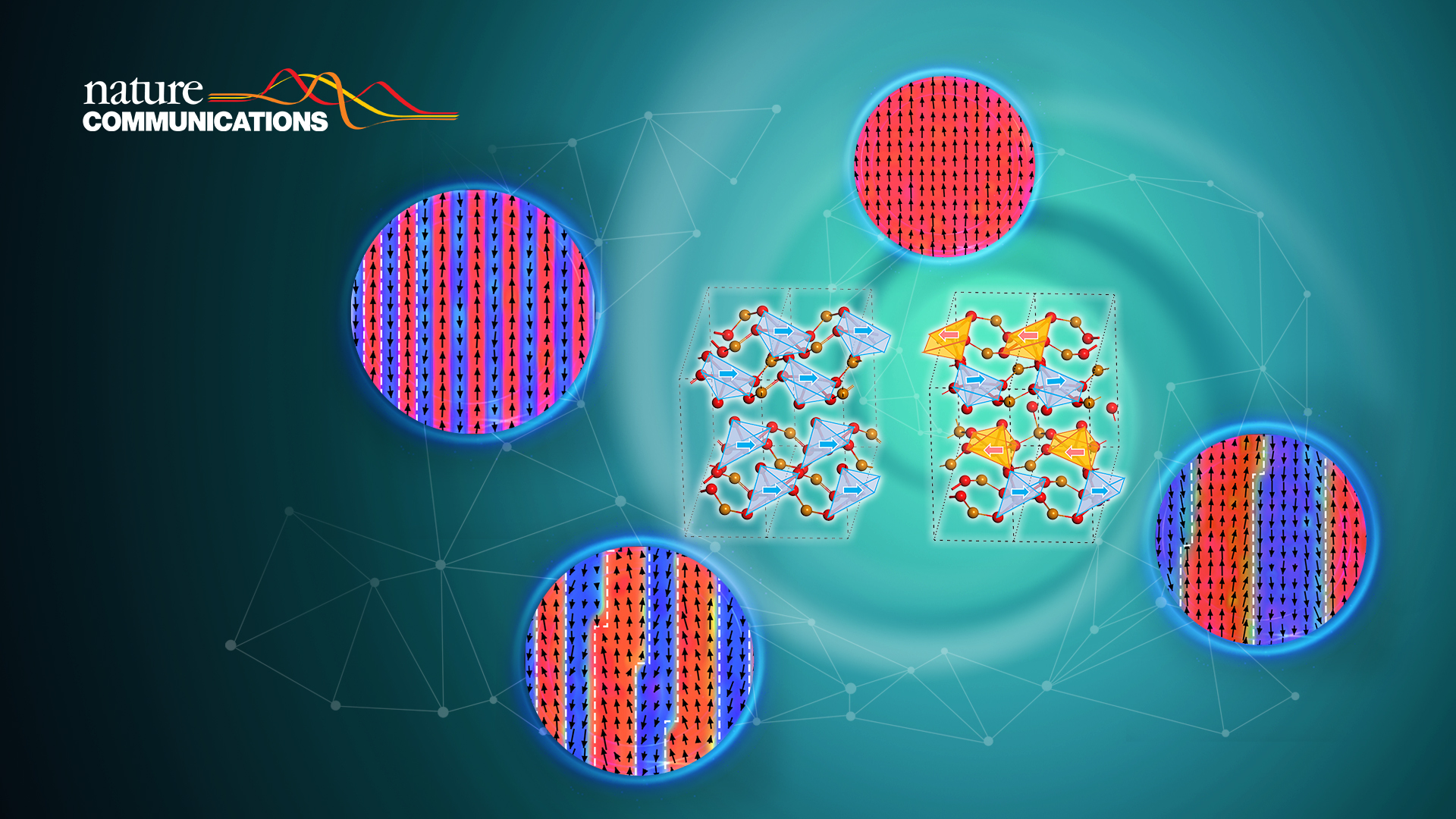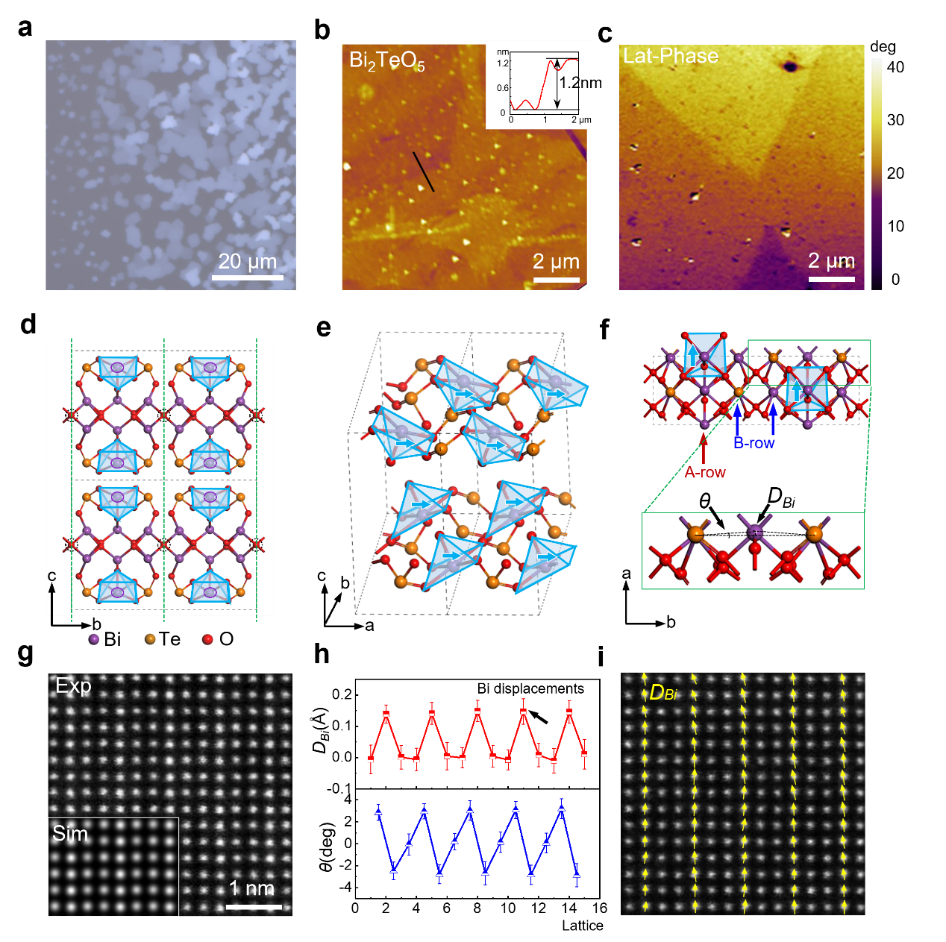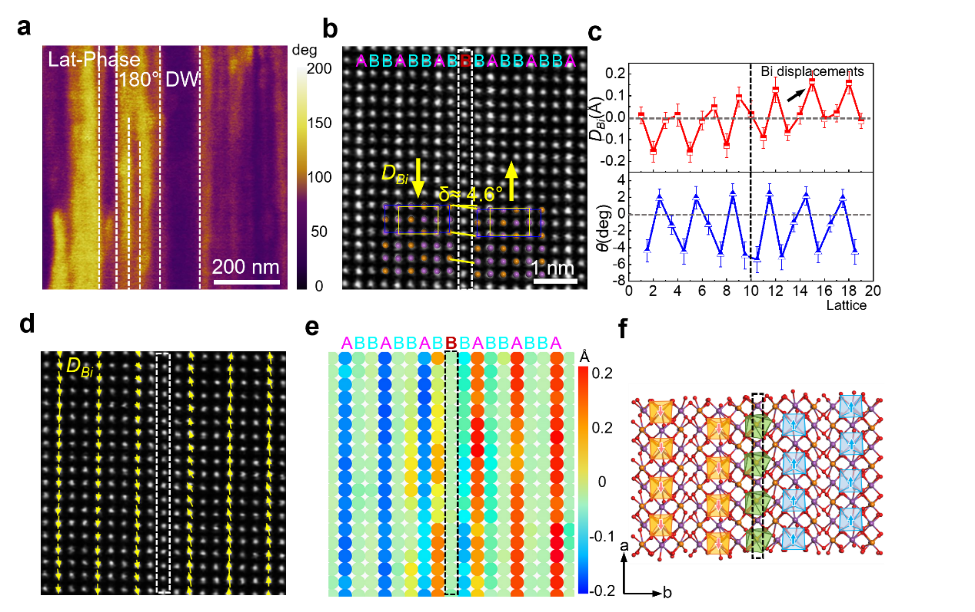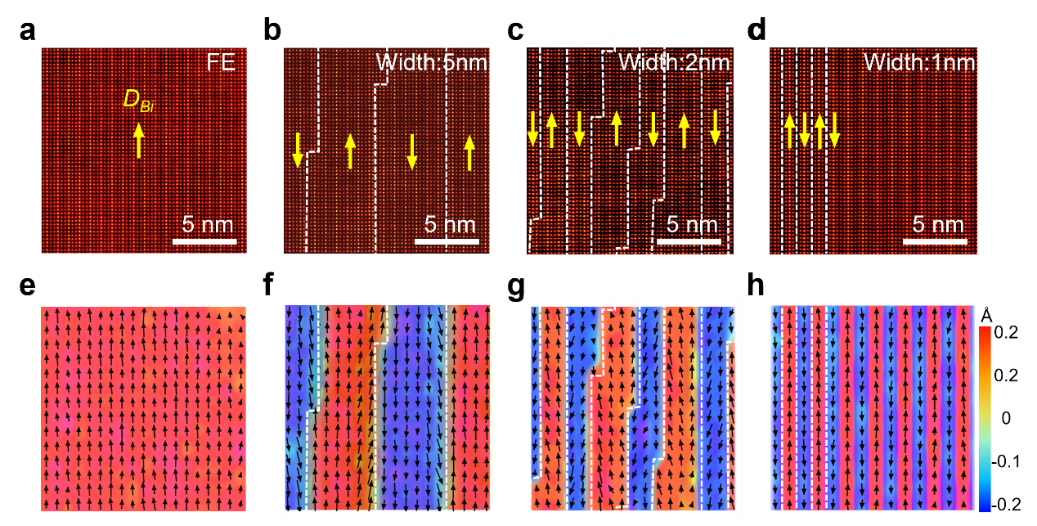Researchers discover mechanism of ferroelectric-antiferroelectric phase transition in Bi2TeO5 films regulated by defective structure
2022-10-24
Ferroelectric (FE) materials, showing switchable electrical polarizations under external electric fields, have shown great potential in applications of non-volatile memories, field-effect transistors, transducers, actuators, and other devices.
In recent years, two-dimensional (2D) intrinsic FEs, such as CuInP2S6 and In2Se3, are emerging candidates for their diverse FE tunability and interlayer slip ferroelectricity. Unlike conventional three-dimensional (3D) FEs, 2D FEs avoid the inevitable dangling bonds at the surface, which drastically reduce the surface energy and surface reconstruction, thus enabling thin or even monolayer ferroelectric properties to facilitate the construction of nanodevices. However, the realization of continuous FE domain tunability and FE/AFE transition in vdW materials is still challenging.

Associate Professor Junhao Lin’s research group from the Department of Physics at the Southern University of Science and Technology (SUSTech) has recently made important progress in the regulation of ferroelectric domain structures in novel two-dimensional ferroelectric materials.
Their paper, entitled “Continuously tunable ferroelectric domain width down to the single-atomic limit in bismuth tellurite,” was published in Nature Communications, a multidisciplinary journal covering the natural sciences, including physics, chemistry, earth sciences, medicine, and biology.
A novel two-dimensional material Bi2TeO5 with room temperature (RT) intrinsic ferroelectric polarization was reported, and the mechanism of the size and shape tunable ferroelectric domain induced by intercalated ferroelectric domain walls and the resulting ferroelectric-antiferroelectric phase transition were revealed.
In view of this, Prof. Lin’s research group synthesized a novel 2D RT ferroelectric material by the chemical vapor deposition (CVD) method. They confirmed the existence of in-plane ferroelectric domain structure in the material by piezoelectric microscopy (PFM). Combined with electron diffraction and atomic scale energy spectrum analysis, it found that the material is Bi2TeO5 with an orthogonal structure.
According to the results of the first principles calculation, Bi2TeO5 is a typical shifted ferroelectric material, and its in-plane ferroelectric polarization is derived from the displacement (DBi) of Bi3 ions along a axis and the tilting of BiO5 cages structure along the b axis. Combined with aberration-corrected transmission electron microscopy (TEM), sub-angstrom scale ion displacement can be analyzed, and the displacement scale and distribution of Bi3 ions can be obtained. According to statistics, an obvious and uniform DBi of Bi3 ions around 0.14 Å appears along the a axis in the experiment, consistent with the calculated 0.11 Å.

Figure 1. CVD growth and structural characterization of Bi2TeO5 single crystal
Further investigation of the domain structure in Bi2TeO5 revealed a large number of strip domain structures in the sample. Atomic-scale structure characterization shows that the observed strip domains are 180° ferroelectric domains. Obviously different from other ferroelectric materials, there is an extra row of atomic planes composed of Bi/Te at the wall of the 180° ferroelectric domain, forming planar intercalation defects. In addition, lattice distortion and polarization attenuation are observed at the domain walls. The results show that the presence of Bi/Te intercalated domain walls can effectively reduce the strain energy of the splicing between ferroelectric domains, so that the 180° domain walls can exist stably.

Figure 2. Formation of 180° ferroelectric domains induced by Bi/Te intercalation
The researchers also found that the width of the 180° ferroelectric domain can be effectively regulated by adjusting the ratio of Bi2O3 to Te in the precursor. Both PFM and high-resolution STEM results show that the 180° domain width in the sample decreases significantly with the decrease of Bi2O3 components.
In the limit condition, when the width of the ferroelectric domain drops to half a single cell (about 1nm), the ion shifts of the adjacent Bi3 exhibit periodic antiparallel arrangement characteristics. Meanwhile, the sample is completely transformed from the FE phase to the AFE phase, showing uniform antiferroelectric properties, and the macroscopic residual pole becomes zero. Similar to the formation of 180° domains, the introduction of high-density Bi/Te intercalation defects in the AFE phase can also serve as a buffer layer to effectively reduce the strain energy of the system. Finally, the sample completed the transformation from ferroelectric Bi2TeO5 to antiferroelectric Bi5Te3O13 structure.

Figure 3. Modulation of domain width by intercalation and FE-AFE phase transition
In summary, a robust room temperature in-plane ferroelectricity in 2D Bi2TeO5 was observed, which enriched the intrinsic 2D ferroelectric material system. It revealed that intercalation defects, as a new regulatory unit, regulate the size and direction of ferroelectric domains in two-dimensional Bi2TeO5 films, and the resulting low-dimensional FE-AFE phase transition. The research results provide new ideas for the regulation of ferroelectric domain structure and phase structure of 2D ferroelectric materials, and reveals the great promise for the nanodevices application.
Dr. Mengjiao Han of SUSTech (currently at the Songshan Lake Materials Laboratory (SLAB) as Associate Researcher) and Dr. Cong Wang at the Renmin University of China (RUC) are the co-first authors of this paper. Prof. Wei Ji at RUC, Prof. Lixing Kang at the Suzhou Institute of Nano-Tech and Nano-Bionics (SINANO), and Assoc. Prof. Junhao Lin at SUSTech are the corresponding authors.
This study was supported by the Ministry of Science and Technology (MOST), National Natural Science Foundation of China (NSFC), Guangdong International Science Collaboration Project, and Shenzhen Science and Technology Programs. The authors also acknowledge the assistance of the Pico Center and Core Research Facilities at SUSTech.




